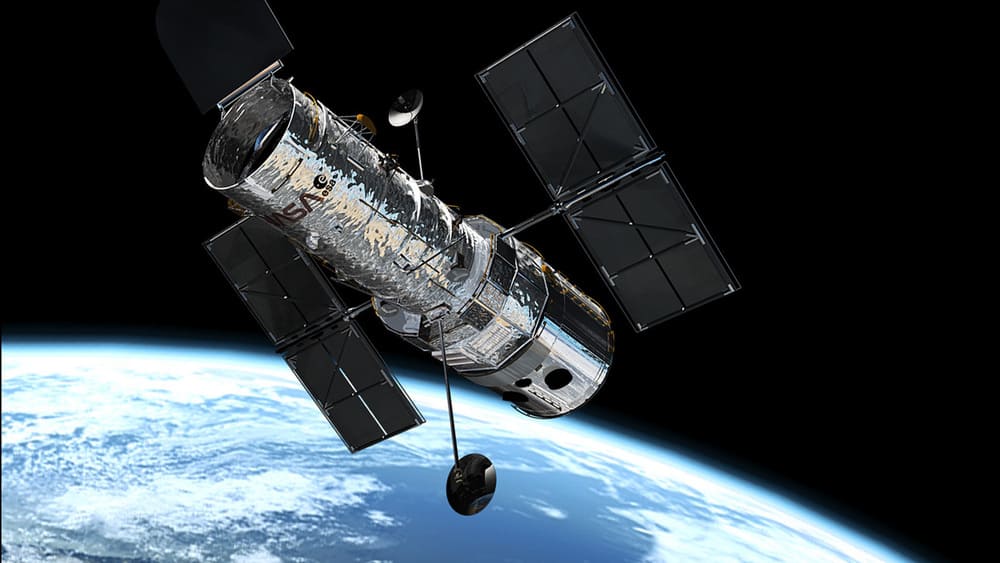The Hubble Space Telescope (HST), launched in 1990 by NASA, has revolutionized our understanding of the cosmos. By providing high-resolution images and data of distant celestial bodies, Hubble has transformed our view of the universe. This article delves into the significant contributions of Hubble, its technological marvels, and its ongoing legacy in astronomical observations.
The genesis of Hubble Space Telescope
The idea of placing a telescope in space was born from the limitations of ground-based telescopes, which are hampered by the Earth’s atmosphere. The Hubble Space Telescope was designed to circumvent these limitations, providing clearer and more detailed images of the universe. Named after the renowned astronomer Edwin Hubble, the telescope’s mission is to explore the cosmos, from our solar system to the distant reaches of the universe.
Technological marvel: engineering and design
Hubble’s design is a testament to human ingenuity. The telescope is equipped with a 2.4-meter primary mirror and a suite of scientific instruments, including cameras and spectrographs, that capture data across the electromagnetic spectrum. This includes ultraviolet, visible, and infrared light, allowing astronomers to study a wide range of cosmic phenomena.
Astronomical observations: peering into the past
One of Hubble’s key contributions is its ability to look back in time. Because light from distant objects takes millions or even billions of years to reach us, observing these objects allows us to see them as they were in the past. Hubble’s observations have provided insights into the early universe, the formation and evolution of galaxies, and the life cycles of stars.
Deep space exploration: unveiling the unknown
Hubble’s deep field images, such as the famous Hubble Deep Field and Ultra Deep Field, have revealed thousands of galaxies in a tiny patch of sky. These images have shown that the universe is teeming with galaxies, each containing billions of stars. This has expanded our understanding of the vastness and richness of the cosmos.
Studying cosmic phenomena
Hubble has made significant contributions to our knowledge of various cosmic phenomena. For instance, its observations of black holes have provided evidence of their existence and behavior. By studying the motion of stars around the centers of galaxies, Hubble has confirmed that supermassive black holes reside at the hearts of most galaxies, including our own Milky Way.
Exploring the life cycle of stars
Hubble’s detailed images of nebulae—vast clouds of gas and dust—have provided insights into the birth and death of stars. The iconic Pillars of Creation image, depicting a region within the Eagle Nebula, shows towering columns of gas where new stars are being born. On the other hand, Hubble’s observations of supernovae have shed light on the explosive deaths of massive stars.
Exoplanet discoveries: alien worlds
One of the most exciting areas of Hubble’s research is the study of exoplanets, or planets outside our solar system. By analyzing the light from stars that host these planets, Hubble has detected their atmospheres and even identified the presence of water vapor, giving us clues about their potential habitability.
Cosmic expansion and dark energy
Hubble has played a pivotal role in understanding the expansion of the universe. By measuring the distances to faraway galaxies, Hubble has helped determine the rate of cosmic expansion. This has led to the discovery of dark energy, a mysterious force driving the accelerated expansion of the universe. Understanding dark energy remains one of the biggest challenges in modern cosmology.
The role of NASA and space missions
The success of the Hubble Space Telescope is a testament to NASA’s commitment to space exploration. Over the years, Hubble has undergone several servicing missions by astronauts, who have repaired and upgraded its instruments. These missions have extended Hubble’s operational life and ensured its continued contributions to science.
Hubble’s legacy: a window into the universe
As Hubble approaches its third decade in orbit, its legacy is undeniable. The telescope has not only provided stunning images but also data that have led to groundbreaking discoveries in astrophysics and cosmology. Hubble’s findings have inspired countless scientific papers and have deepened our understanding of the universe.
The Hubble Space Telescope has truly transformed our view of the universe. From revealing the beauty and complexity of distant galaxies to uncovering the mysteries of black holes and exoplanets, Hubble has expanded our horizons and inspired a sense of wonder about the cosmos. As we look to the future, Hubble’s legacy will continue to guide and inform new generations of astronomers in their quest to explore the universe.


